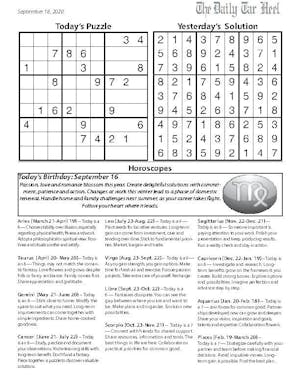I’ve only made one error in my time reporting for the DTH that required a correction, but it was a doosy. Still a freshman, I referred to a woman I interviewed as a man. “Was it just a pronoun mixup?” you ask. Absolutely not. In my mind, this woman was a man. When I interviewed her over the phone, I had no doubt she was a woman. When I wrote the story, a few hours later, I thought of her as a man. (Check out the correction and story here).
For the record, this source was exceedingly polite about my mistake. But that’s not always the case, nor should it be. A factual error can really be harmful to someone’s reputation (for instance, when you throw some extra genitalia into the mix). When we make big mistakes, we expect people to be angry. And we’re angry too. As Managing Editor Elise Young would tell you, there’s nothing we hate more than messing up. Newspapers rely on the perception among their readers that what they read is accurate. When corrections become commonplace, a newspaper’s legitimacy is challenged.
So how do these sorts of mistakes happen in an organization that builds fact checking into every step of its process?
At the DTH, we have a system called ‘cq’ing. Basically, this entails the writer of an article creating several notes within the text of his or her story for each individual fact, name, etc. that needs to be checked. These notes, which contain Internet links, references to a document, or any other source, are individually checked and verified by a whopping five editors throughout the editing process.
But sometimes even this process fails. It fails much too often.
Here’s one example: About a week and a half ago, we ran a graphic that showed which ACC schools played which sports. It turned out the thing was riddled with errors, which was really a shame because otherwise, it was pretty cool. Design and Graphics editor Kevin Uhrmacher traced the sources back, and we found the problem.
It turned out several of the schools’ own websites were wrong, or hadn’t been updated to reflect that some sports had been cut. Meanwhile, the copy desk only fact checked the graphic to a compiled list that had been gathered by the sports desk, based on athletic departments’ websites. So we weren’t actually tracing our facts back to original sources.
Beside ourselves, we made a few adjustments to how we copy edit graphics. From now on, we’ll take each graphic or related project on a case-by-case basis, making sure we always return to reliable sources when fact checking. The new policy came in handy while reading over a graphic of chancellor search committee members’ political affiliations.
On the ACC graphic, we had a lot to correct. The 144-word correction in the print edition was, for all intents and purposes, an article. We should have given it its own comments section online.
Of course, not all mistakes are created equal, especially when they’re not really mistakes. We got an angry email last week from a member of the chancellor search committee who claimed that he was not registered with the party we had claimed him to be in our graphic. We doubled back to check the database and that he was the right person, and everything checked out. Director of Enterprise Sarah Glen called the man and learned that he was honestly unaware he was registered with that party. Embroiled in an identity crisis, he was in the process of changing his registration.
I now have an answer to all those who doubt the positive change in this world spurred on by journalism.
To get the day's news and headlines in your inbox each morning, sign up for our email newsletters.



